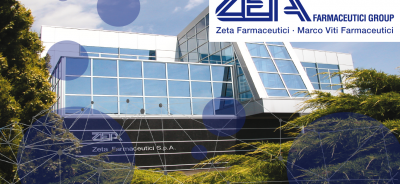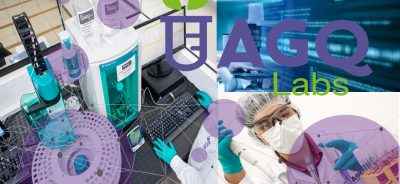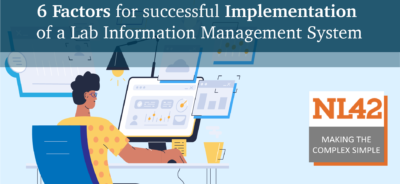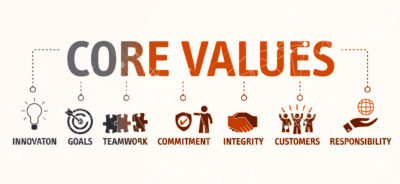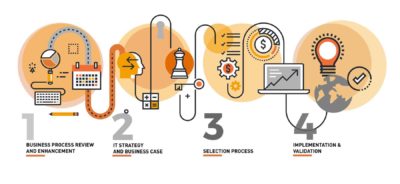Selection process – How to select a LIMS
At one point of a digital transformation project for the laboratory processes, the moment comes to identify the best fit-to-purpose system to manage the laboratory scientific data. As mentioned in previous articles, this step should be by far one of the last in your paperless project. All previous steps will provide you commitment from the team members and stakeholders, will streamline your processes and will ensure a successful implementation.
Readiness: key differentiator for the process of selecting a laboratory data management system
When approaching the selection process of the right laboratory data management system, in order to make this step a positive experience, the readiness comes as a result of your previous homework: team members’ commitment, stakeholders’ support, process mapping and clear requirements including the business, users and technical ones.
Avoid Acronyms when looking for your best fit to purpose laboratory data management system
Despite the title of this article, we’re very reluctant to use acronyms when mapping the processes and defining the user requirements. Yet most of the times customers have in mind to look for a named system, let’s say a LIMS, by default. Regardless we work in an R&D or a QC laboratory, when deepening attentively, listening to the business goals, identifying the “must have” and “nice to have”, we identify requirements that are above and beyond an acronym.
We often end up with a wish list that might bring you to think about a bit of ELN and a bit of LIMS, maybe a LES, and a bit of CDS without forgetting the critical interactions with the instruments, the corporate ERP and potentially with the MES of the production line.
This is ground for confusion, for you and the solution provider.
The choice of a “LIMS”: an important investment requires an accurate selection process
My partner, Roberto Castelnovo is used to provocatively say:
We visit three shops or more to purchase a pair of shoes. We spend months or even years before choosing a new house. While It takes only one good demo to purchase a software!.
The purchasing for a pair of shoes is based on somehow precise criteria: comfortable, nice look and feel, right color, fit for purpose running or gala dinner, according to the season, the climate where we live… Some of these criteria are measurable, hard to buy a shoe which is not our size, yet testing is critical as sizing happen not to be so standard. Other criteria are less measurable or not at all: Do I like how I look with them? The lifecycle of a pair of running shoes is just few months and the cost is relatively limited.
Certainly, more complex but the same process is followed when selecting a house: location, right number of bedrooms, etc. As it is related to a purchase that involves a significant amount of money, most of us is implementing, consciously or unconsciously, a selection process which drives to a couple of options and finally the decision. The lifecycle of a house is definitely longer than a pair of shoes and sometime it lasts our entire life. The cost involved is large and it is always an important decision.
Both processes sound logical, reasonable and expected for most of our purchasing actions.
Reality is that, when it comes to software, companies are too often purchasing without following the same logic. The lifecycle of such data management systems is long, extremely long… Some software products developed more than twenty years ago are still in use nowadays. The cost involved is large or very large when considering the internal costs of the implementation, the validation and the maintenance.
Even worse, too often we encounter companies that have purchased a laboratory data management system a couple of times in less than ten years. The reasons are typically that the software does not fit for the purpose, the company producing the software does not support the customers anymore, the technology behind the system is obsolete.
The conclusion: the investment is similar to a house; the process is similar to a pair of shoes or even less accurate. Why?
In the end, our experience tells us that the purchasing process is not a simple standard operation procedure to go through and involves in large percentage emotional responses to the interaction with the providers. Software products are intangible hence difficult to evaluate, vendors are able to present the product in such a way that it “appears as suitable” to support the customer needs.
Hence…How to handle the process to ensure that risks are minimized and the software fits with the expectations?
Our large experience working in commercial companies has allowed us to develop a methodology that permits to reach, with the lowest level of risks, the critical moment of signing the contract.
The human part of my laboratory data management system
Selecting a system in any country within Europe, even more in non-English speaking countries, brings a language parameter that sometime comes as highest requirement in the whole process. Proximity of the vendor and implementers, first line support in local language and local time working hours are critical for the final users and the IT business partners to feel comfortable in the long-term partnership with the vendor. The European complexity creates difficulties to international providers to get close to the market they want to address. It is always a strong surprise for us to realize how little is known about the lab informatics industry by the potential buyers. Some providers, considered as global market leaders are not even named in selection processes because their local presence is limited and their marketing strategy doesn’t reach them.
Lowering the barriers for international lab solutions providers to approach the European markets
As organizers of the Paperless Lab Academy, we are glad to receive, every year, more than twenty lab informatics providers sponsoring the event. Some providers are well-known and loyal partners of this initiative since the beginning yet we are proud to welcome new comers every year.
Young European companies bring innovative solutions, specific answers to key data management processes. They are eager to bring quality in their offering and they desire to do it right with their customers whom respond positively to their business model.
Others, international companies well implemented in the States, India, Canada or Australia, strong experience and skilled technical people, come to investigate the potential of the European market to position their solutions.
Despite the language barrier, the European lab informatics market offering has never been so promising. Just going to the big shop around the corner is not anymore, the only option for your laboratory, if you´re looking for the implementation of a solution lasting for several years, meeting your today and future business goals and providing you the flexibility to grow and the ability to compete.




